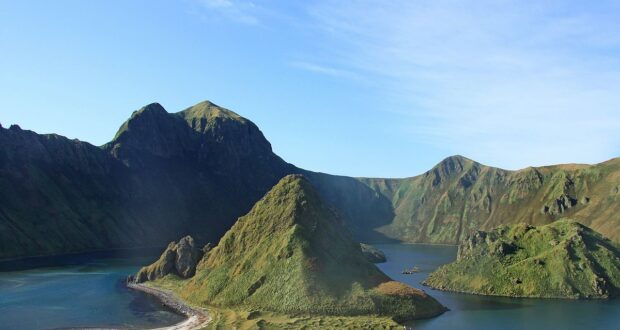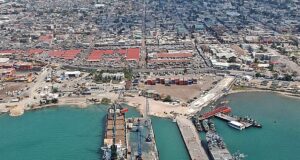4 January, 2023
By Luke Austin – Junior Fellow
Relations between Japan and Ukraine have steadily developed since the fall of the Soviet Union and Ukraine’s subsequent independence. However, due to the Russian invasion of Ukraine in February 2022, Japan’s defence policy being hugely influenced by its security alliance with the US as well as Japan being engaged in its own territorial dispute with Russia, bilateral Japan-Ukraine relations have entered a tumultuous period.
Japan and Ukraine enjoyed prosperous bilateral trade from the 1990s, despite the tendencies of Ukraine’s second post-independence President Leonid Kuchma to favour stronger economic relations with Russia and the Commonwealth of Independent States (CIS). Ukrainian exports to Japan are dominated by agricultural products and iron ore. Japanese exports to Ukraine mainly consist of automotive vehicles and components and have increased at a yearly rate of 12.5% between 1997 and 2020. In February 2021, Japan and Ukraine commenced bilateral negotiations with the aim of establishing a free trade agreement.
The world was shocked on 22nd February, when it was announced that Russia had decided to launch a military invasion of Ukraine. President of the Russian Federation Vladimir Putin and other high-ranking Russian officials termed the invasion a ‘military operation’ (voennaya operatsiya), stipulating its aims as the ‘demilitarisation’ and ‘denazification’ of Ukraine. The invasion removed any doubts that Russian foreign policy is guided by Eurasianism: a broad movement first pioneered by the linguist Nikolai Trubetzkoy in the 1920s advocating for Russian dominance over a territory roughly covering that of the former Russian Empire and Soviet Union under a set of ideologies encompassing elements of monarchism, Russian Orthodoxy and traditional values. Trubetskoy’s Eurasianism also opposed what he viewed as “European liberalism”. In its modern form, championed by writers such as Alexander Dugin, little has changed in Russian Eurasianist thought. This does not negate, but rather complements the notion that the invasion forms part of a response to the eastward expansion of both the EU and NATO, which Russia perceives as a threat to its own security. Furthermore, a pro-Russian government in Ukraine would offer strategic advantages ranging from warm-water ports with access to the Black Sea to reducing the range and effectiveness of military action against Russia itself. However, there is more than meets the eye- it is not just a material threat, but rather one of a more normative and ideational one. The EU’s European Neighbourhood Policy (ENP) was extended around the 2008 Russo-Georgian war to several former Soviet republics, including Ukraine. It was also in 2008 that Ukraine launched a NATO membership application plan in the background of that year’s Bucharest Summit, only to be rejected. From a constructivist perspective, it is the alienation of Russia by inclusion of several of its former territories in a community characterised by a set of common values and norms which has defined EU-Russia relations. An additional line of argumentation posits that Russia’s actions are driven by a desire to eventually unite the Eastern Slavic nations of Russia, Belarus, and Ukraine under a banner defined by their shared historical and cultural heritage.
The ongoing conflict in Ukraine has reached unprecedented dynamics, with both Russian and Ukrainian military forces engaged in bitter combat in Ukraine’s eastern regions. On 12 December, Ukraine’s General Staff reported heavy fighting and the repelling of Russian offensives in the Donetsk and Luhansk oblasts. Russian missile attacks have been launched against Kyiv, Kharkiv and Kryvyi Rih as part of a strategy targeting national infrastructure. The potential for the use of nuclear weapons continues to be discussed, partially for its strategic and partially for its psychological advantages for the Russian side in escalating the conflict further and dividing the West.
The Kuril Islands are the subject of an ongoing territorial dispute between Japan and Russia. They have been under Russian control since 1945, while Japan officially recognises these territories as being illegally occupied. For over seven decades, this dispute meant that both sides failed to negotiate a peace treaty recognising the end of hostilities at the end of the Second World War. While both sides have outlined proposals for a peace treaty in 1998 and again in 2019, any hope for an agreement to reach such a conclusion was dashed following the Russian invasion of Ukraine. Throughout the 1990s and 2000s, Russian foreign policy was far more deeply engaged with issues concerning Russia’s western borders such as antimissile projects in Europe and NATO’s expansion, instead of issues concerning its eastern borders such as North Korea’s growing nuclear capabilities or the Kuril Islands dispute. Putin and former Prime Minister of Japan Shinzo Abe were engaged in negotiations for joint economic activity in the Southern Kurils towards the late 2010s, although this venture faced considerable legal and political challenges. Both sides have hardened their respective positions in the past year. In response to comments made by Japanese foreign minister Yoshimasa Hayashi asserting that the Kuril Islands are an “integral part” of Japan, Russia announced its withdrawal from a negotiations. Several measures were taken as part of this trend, including the annulment of a 1998 agreement allowing Japanese fishermen to operate around the islands on the basis of accusations that Japan failed to meet its financial obligations set out under the agreement, which led to vocal criticism from Japan.
Japan has thrown its full support behind Ukraine. During the build-up of Russo-Ukrainian tensions in January, Japan’s ambassador to Ukraine asserted that Japan’s response to any Russian aggression towards Ukraine would constitute a “very powerful reaction” in an interview with Ukrainian media. This support is further reflected in Japan enacting a wide range of sanctions against Russia, including the freezing of assets owned by a number of Russian citizens and the restriction of travel to Japan from Russia. In May, Japanese Prime Minister Fumio Kishida announced an additional $300 million In financial aid for Ukraine to be provided through the World Bank, effectively doubling the amount previously pledged. The wider Japanese public has repeatedly expressed support for Ukraine, as mirrored in the results of opinion polls carried out by Yomiuri Shimbun and numerous buildings, including castles, being illuminated with the colours of the Ukrainian national flag. Even more strikingly, Japan has supplied Ukrainian military forces with protective equipment such as bulletproof vests and helmets, while also accepting limited numbers of Ukrainian refugees. It has been suggested that the course of action taken by Japan vis-à-vis the Ukraine crisis has been informed by careful observation of Germany, another state which despite its defence alliance with the US has been reluctant to become involved in foreign military engagements.
The invasion of Ukraine has energised Japan’s consolidation of its military capabilities. There has been a remarkable increase in the activity of the Japan Self-Defence Forces (JSDF) as of recently. In late May, the 64th Fuji Firepower exercises, consisting of live-fire drills, were held in Shizuoka Prefecture by Japan’s Ground Self-Defence Forces (JGSDF). Furthermore, the invasion of Ukraine, coupled with ongoing tensions in the Taiwan Strait, has encouraged Kishida to bring about a dramatic rise in Japan’s annual defence expenditure– an increase to two percent of GDP in a break with Japan’s previous cap of one percent of its GDP for such spending. Whilst there were considerable doubts over American commitment to protecting Japan and over Japanese efforts to become more militarily autonomous amidst heightening threats from North Korea and China as well as towards the end of Shinzo Abe’s administration in the late 2010s, the war in Ukraine has started to catalyse Japan’s shift towards a more proactive foreign policy. However, the Japanese security discourse has reflected a shift emphasising the protection of Taiwan from Chinese aggression, amidst fears that China would take a similar course of action towards Taiwan to that taken by Russia against Ukraine over the past year. Japan’s Diplomatic Blue book reflects similar changes in light of Russian aggression, taking a stance on the Kuril Islands dispute which has been described as “hardline”. Japan’s new National Security Strategy was also published on 16th December. The most significant change from previous strategies is perhaps the new permission granted for counterstrike capability: the capability to attack targets such as missile launch facilities located within the territory of a state which attacks Japan. In addition, the new strategy emphasises that China is “the greatest strategic challenge” to the peace and stability of not only Japan, but also of the wider international community.
Given Russia’s invasion of Ukraine, as well as the divergent foreign policy positions of both Japan and Russia, it is unlikely that any more progress will be achieved in resolving the Kuril Islands dispute. If anything, it has not only become less likely that both sides will reach an agreement vis-à-vis the Kurils’ status, but whatever progress was made towards a comprehensive peace agreement between the 1990s and 2010s has been undone almost overnight. Russia is for the time being engaged in what could become bloody winter fighting in Ukraine whilst it still grapples with the economic devastation brought about by international sanctions.
Japan, on the other hand, is experiencing a level of political instability seemingly unprecedented for a state with such a reputation for democratic rule and high state capacity. Kishida faces a plethora of challenges following the assassination of Abe in July: probes and investigations into the influence exerted by the Unification Church, which has been identified as part of Abe’s murderer’s grievances, have caused something of a stir in domestic Japanese politics. Japan, which is famously deficient in natural resources of its own, now also faces a dilemma in its energy policy, especially with regards towards reducing its energy dependency on Russia reflected in Japanese involvement in the Sakhalin liquid natural gas projects and intergovernmental divisiveness over a transition to increased use of nuclear power. At the same time, Kishida’s approval ratings continue to drop as the competence and skill of his administration are incessantly tested by sudden, often dramatic and unprecedented events such as the invasion of Ukraine and Abe’s assassination. In addition, Kishida’s defence drive has faced widespread opposition, including from within his own Liberal Democratic Party. Nevertheless, while progress may not be made in resolving the issue of their disputed status, the Kuril Islands could still be used as a ‘hot topic’ to mobilise popular opinion and nationalism in both Russia and Japan should their bilateral relations deteriorate further.
Image: Caldera of the island of Yankicha/Ushishiru, Kuril Islands (Source: CHK46 via CC BY-SA 3.0)
 Human Security Centre Human Rights and International Security Research
Human Security Centre Human Rights and International Security Research




